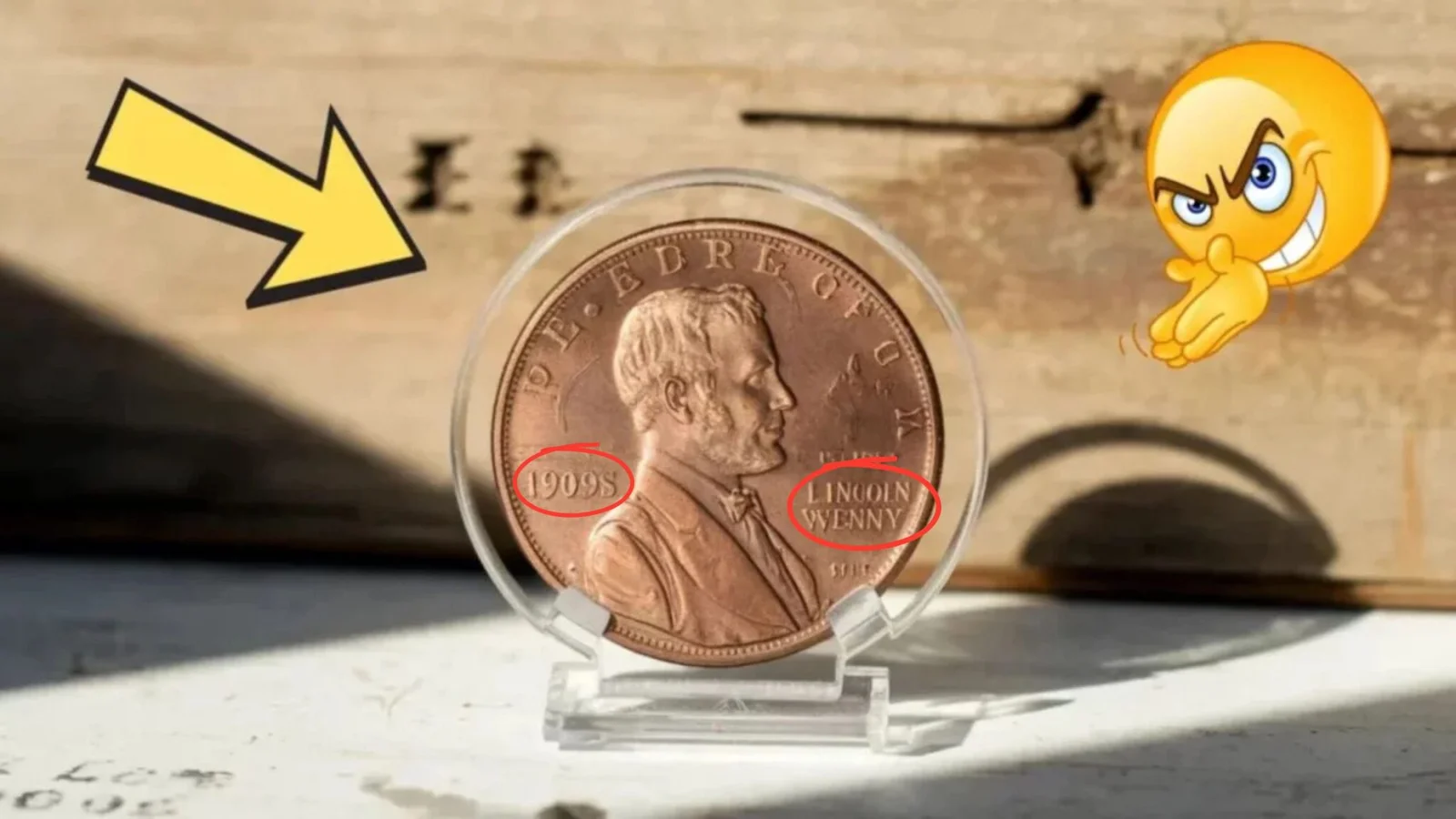Imagine finding a penny in your change jar that’s worth more than a luxury car. Sounds like a dream, right? The Lincoln Wheat Penny, a small coin with a big history, has some rare versions that can fetch up to $144,000—or even millions—at auction. Even more exciting? One of these treasures might still be in circulation, waiting to be discovered. In this post, we’ll dive into the fascinating world of the Lincoln Wheat Penny, explore why it’s so valuable, and share tips on how you can spot a potential fortune in your pocket. Let’s get started!
What Is the Lincoln Wheat Penny?
The Lincoln Wheat Penny, often called the “wheat cent,” is a one-cent coin minted by the U.S. Mint from 1909 to 1958. Featuring Abraham Lincoln’s profile on the obverse and two wheat stalks on the reverse, it’s an iconic piece of American numismatic history. While most wheat pennies are worth just a few cents, certain rare editions—like the 1943 bronze penny—can be worth staggering amounts due to minting errors or low production runs.
A Brief History of the Lincoln Wheat Penny
Introduced in 1909 to celebrate Abraham Lincoln’s 100th birthday, the Lincoln Wheat Penny was the first U.S. coin to feature a real historical figure. Designed by Victor David Brenner, it broke tradition with its detailed portrait and wheat stalk reverse, symbolizing America’s agricultural roots. The coin was minted until 1958, when it was replaced by the Lincoln Memorial Penny.
During World War II, copper shortages led the Mint to produce pennies from zinc-coated steel in 1943. However, a few copper planchets from 1942 were accidentally struck with the 1943 date, creating the ultra-rare 1943 bronze penny—a coin that’s now a legend among collectors.
Why Is the Lincoln Wheat Penny So Valuable?
The value of a Lincoln Wheat Penny depends on its rarity, condition, and historical significance. Here are the key factors that drive its worth:
- Minting Errors: Errors like the 1943 bronze penny or the 1955 double die obverse (where the date and text appear doubled) are highly prized.
- Low Mintage: Coins like the 1909-S VDB (only 484,000 minted) are rare due to limited production.
- Condition: Uncirculated coins with a “red” copper tone fetch the highest prices.
For example, a 1943 bronze penny sold for $1.7 million in a private sale, while others have fetched $144,000 at auction, depending on condition.
| Key Lincoln Wheat Penny Variants | Mintage | Estimated Value (High Grade) |
|---|---|---|
| 1943 Bronze Penny | ~10–15 | $144K–$1.7M |
| 1909-S VDB | 484,000 | $10K–$168K |
| 1955 Double Die Obverse | Unknown | $1K–$125K |
| 1922 No D | Unknown | $10K–$500K |
How to Spot a Valuable Lincoln Wheat Penny
You don’t need to be a professional numismatist to hunt for a rare wheat penny. Here’s how to start:
- Check the Date and Mintmark: Look for key dates like 1909-S VDB, 1943 bronze, or 1955 double die. Mintmarks (S, D, or none) are below the date.
- Perform a Magnet Test: A 1943 penny that doesn’t stick to a magnet could be the rare bronze version (most 1943 pennies are steel and magnetic).
- Inspect for Errors: Look for doubling in the text or date, especially on 1955 pennies.
- Evaluate Condition: Coins with sharp details and a reddish hue are more valuable.
| Identification Tips | What to Look For | Why It Matters |
|---|---|---|
| Date & Mintmark | 1909-S VDB, 1943, 1955 | Rare dates increase value |
| Magnet Test | Non-magnetic 1943 penny | Indicates rare bronze error |
| Doubling | Blurred text/date | Signals valuable error coins |
| Color | Red vs. brown tone | Red coins are worth more |
Notable Lincoln Wheat Penny Sales
The Lincoln Wheat Penny has made headlines with jaw-dropping auction prices:
- 1943 Bronze Penny: Sold for $1.7 million in a private sale (2010).
- 1909-S VDB: An MS67RD graded coin fetched $168,000 in 2022.
- 1955 Double Die: High-grade examples have sold for up to $125,000.
- 1922 No D: A pristine example reached $500,000 at auction.
These sales highlight why collectors are obsessed with finding these coins in circulation.
Expert Tips for Coin Collectors
- Get Coins Graded: Use services like PCGS or NGC for professional authentication.
- Store Properly: Keep coins in protective holders to preserve their condition.
- Join a Community: Connect with local coin clubs or online forums to learn and trade.
- Be Cautious of Fakes: The 1943 bronze penny is often counterfeited, so verify with experts.
- Check Everywhere: Look in old jars, piggy banks, or inherited collections—you never know where a treasure might hide!
Frequently Asked Questions (FAQs)
Q: Why is the 1943 bronze penny so rare?
A: During WWII, pennies were made from steel to save copper. A few copper planchets were accidentally used, creating only 10–15 bronze pennies.
Q: Can I find a $144K penny in circulation?
A: It’s possible but unlikely. Some have been found in change jars or old collections.
Q: How do I know if my penny is valuable?
A: Check the date, mintmark, and condition. Consult a certified numismatist for appraisal.
Q: What’s the best way to sell a rare penny?
A: Work with reputable auction houses like Heritage Auctions or certified grading services.
Conclusion: Start Checking Your Change!
The Lincoln Wheat Penny is more than just pocket change—it’s a piece of American history with the potential to make you rich. From the legendary 1943 bronze penny to the scarce 1909-S VDB, these coins remind us that treasures can hide in plain sight. So, next time you empty your pockets or sort through a coin jar, take a closer look. You might just find a $144,000 penny waiting to be discovered! Share this post with fellow coin enthusiasts, and let us know in the comments if you’ve ever found a rare coin!

